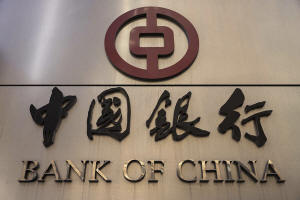|
Trump’s universal tariffs on China total 145%. When Trump
announced Wednesday that China faced 125% tariffs, he did not
include a 20% tariff on China tied to its role in fentanyl
production.
Trump's actions led business executives to warn of a potential
recession, and some of the top U.S. trading partners to
retaliate with their own import taxes, before the pause. But
Trump and China continued raising the tariffs in a tit for tat.
“The U.S. alternately raising abnormally high tariffs on China
has become a numbers game, which has no practical economic
significance, and will become a joke in the history of the world
economy,” a Finance Ministry spokesman said in a statement
announcing the new tariffs. “However, if the US insists on
continuing to substantially infringe on China’s interests, China
will resolutely counter and fight to the end.”
China's Commerce Ministry said it was filing another lawsuit
with the World Trade Organization against the U.S. tariffs.
Beijing last week suspended sorghum, poultry and bonemeal
imports from some American companies, and put more export
controls on rare earth minerals, critical for various
technologies, and put a few dozen American companies on lists
that would prevent Chinese companies from selling them dual-use
goods.
Given the size of the two economies, experts fear global
economic turmoil.
The head of the WTO, Ngozi Okonjo-Iweala, said earlier this week
that the trade war between the U.S. and China could “could
severely damage the global economic outlook."
All contents © copyright 2025 Associated Press. All rights reserved

|
|


